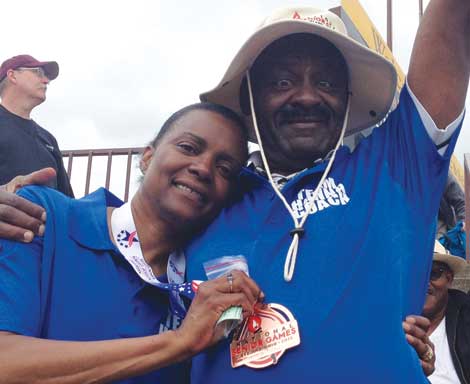VA loans take the fear out of homebuying
Near the end of World War II, the U.S. government decided that it was both vital and wise to reward and honor the victorious soldiers and sailors who had won the war.
In 1944, Congress approved the Serviceman’s Readjustment Act, which included provisions for the granting and insuring of Veteran Administration (VA) loans.
Since VA loans were first introduced, more than 20 million service families have made use of them. The program has surely been one of the most successful ever undertaken to help those that serve our country in war and in peace.
With the end of military actions in Iraq and Afghanistan, a large number of veterans have or will be returning home – many who are planning to buy homes and start families, or move to new cities with new opportunities. And veterans from prior wars or peacetime may be looking to relocate or downsize.
Some may be concerned that the VA Loan process is complicated or even intimidating. Thankfully, the Department of Veteran Affairs has made important changes to the VA Loan process to make it easier and quicker to apply for and receive a loan.
A VA Loan is issued by any qualified lender and is designed to offer long-term financing to eligible American veterans or their surviving spouses. These loans are guaranteed for active military personnel and the following:
• Former and current active duty veterans. During war-time periods and active duty service, the veteran must have, at the minimum, 90 days of service on their records. If a veteran has served only during peacetime periods, the active service requirement is 180 days.
• Most members of the military, veterans, qualified reservists and National Guard members.
• Spouses of military members who died either while on active duty or as a result of a service-connected disability (and whom have not remarried).
Veterans who buy a house using the VA Loan process receive many benefits. In fact, veteran loans have benefits that regular housing loans don’t have. VA Loans may include:
• Zero or low down payment
• No or low closing costs
• No need to purchase mortgage insurance
• Access to renovation assistance and loans
• No cash reserve requirements
• More lenient income and credit score guidelines. (Note: Veterans Affairs does not require a minimum credit score for a VA Loan, but lenders generally have their own internal requirements.)
Even though VA loans are offered at many banks across the country, there are major differences in the experience an individual will have depending upon the type of bank one chooses to work with. The many differences include:
• The amount of face-to-face attention you will get at all levels of the process
• The time it takes to get pre-approved
• The time it can take to process the loan
Some people prefer to have a lender’s personal attention to answer questions and walk them through the entire process, which is what you will find at many community and regional banks.
Community and regional banks often have quicker turnaround as well. This can be very important for active duty personnel, since they may need to complete a transaction in a short amount of time, prior to deployment. For example, Northwest-based HomeStreet Bank employs in-house underwriters, which means they can preapprove customers in less than 72 hours and sometimes in as little as minutes.
One important aspect to look for at any bank you work with is whether there are provisions in the process for one spouse to complete the mortgage process if the other spouse is called up for immediate deployment. Obviously, this is a vital benefit in an occupation that, frankly, depends on a highly mobile workforce.
According to the U.S. Department of Veteran Affairs, VA lending numbers have been on the rise. In 2012 there were 30% more VA loans made than the previous year and three times more than 2008. In fact, the demand is similar to levels not seen since the mid-1990s.
To keep up with demand, the Department of Veteran Affairs has raised the no-down-payment maximum in higher-cost counties across the country including the Washington counties of King, Pierce, Snohomish and San Juan. This means that the home that once seemed out of reach may actually be attainable.
Many veterans and their families may come into the bank with the jitters, but the VA Loan process has been tailored in a way to make it easier. Often, customers are very pleased when they realize how much closer they were to being able to afford a home than they had realized! The amount of money and time saved with VA loans, compared to conventional loans, can end up being thousands of dollars.
The VA Loan was created to help veterans. Many changes have been made to streamline the process and make it easier for veterans to get and insure the loans they need. The best place to start is to sit down with a qualified banker, ask questions and develop a plan to get approved.
Jodi Watson, who wrote this article, is a loan officer for HomeStreet Bank in Tacoma.
